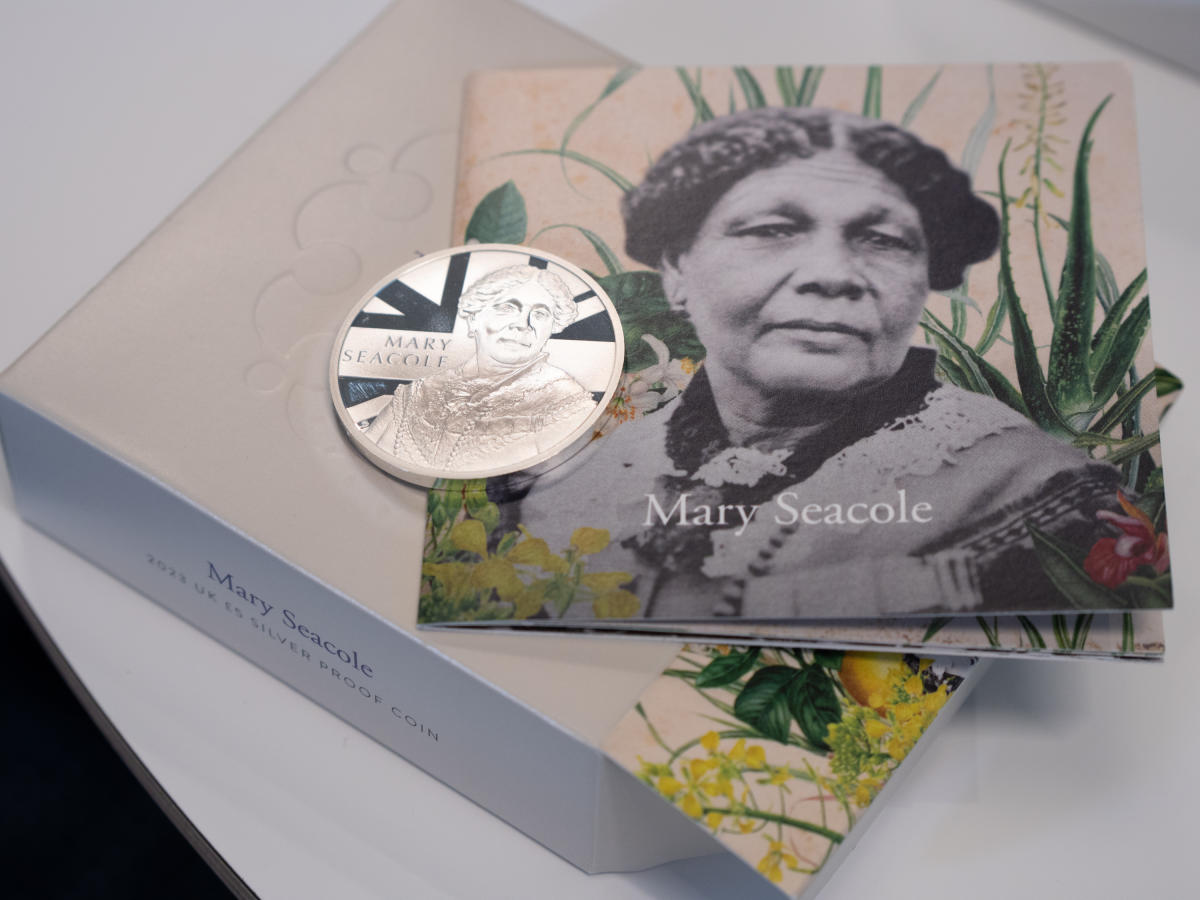In honour of Black History Month in the United Kingdom, the Royal Mint has released a new commemorative coin featuring Jamaican-British nurse Mary Seacole. King Charles III has issued a Royal Proclamation honouring the currency as the “second coin to feature a named Black female.”
The design team at The Royal Mint accurately replicated a photograph of Mary Seacole that is archived at Winchester College. According to the Winchester College archive, the portrait was likely taken by a prominent photographer who was favoured by Queen Victoria somewhere between the late 1860s and the early 1870s.
“This is another significant historical moment and it pays tribute to Mary Seacole as a symbol of the NHS, diversity, social justice, and also in understanding the diverse contributions that have been made to this country,” said Trevor Sterling, chair of the Mary Seacole Trust. “I’m looking forward to travelling to Jamaica to honour Mary Seacole Day – 23 November – to present the coin to the new Jamaican High Commissioner and gift a coin to the Institute of Jamaica.”
“It’s our way of saying thank you, we know that you suffered a loss as a result, and we acknowledge what’s been given to us.”
‘THE ONE WHO NURSED HER SICK’ is inscribed around the circumference of the coin, a line taken from a remark by William H. Russell, a war correspondent for The Times who served in the American Civil War in 1857.
“We are delighted to launch the Mary Seacole commemorative £5 coin,” said Rebecca Morgan, director of commemorative coin at The Royal Mint.
“We hope this coin design pays tribute to her incredible legacy and celebrates her adventurous life and diligent work as a heroine of the Crimean War.”
Patrick Vernon has been at the vanguard of several prominent campaigns on cultural heritage and social justice, including the one to have Ms Seacole featured on a £50 note and added to the national curriculum, which was supported by over 100,000 individuals.
The £50 note campaign was launched by Bank Notes of Colour and lobbied for legal tender to be more representative, showcasing Britain’s diverse histories. Zehra Zaidi, a former Conservative parliamentary candidate, co-led the group with Mr Vernon, and it enjoyed the support of PM Rishi Sunak, who served as chancellor, at the time.
The Royal Mint released a special coin honouring Dame Shirley Bassey’s 70-year musical career earlier this year.
No non-white figure, however, has ever been depicted on British legal currency coins or notes. Mr Vernon, who in 2004 initiated a survey of 100 Great Black Britons in which the nurse ranked first, told The Independent that her picture should be included on the currency.
“Obviously it’s great news that Mary Seacole has been recognised by the Royal Mint. However, this is commemorative and not a legal tender, which I hoped it would be, that could be circulated and used widely among members of the public.”
Bank Notes of Colour campaigned for a person of colour to be on currency and that’s not been achieved yet in 2023, bearing in mind that the Bank of England and all those institutions with a history of enslavement of Black people have not acknowledged our contribution to Britain. Having more Black people on legal tender would be a powerful way to do that.”
Despite Mr Sunak’s previous desire for this to happen, No 10 has not been reached for comment on why Ms Seacole’s coin is not on legal tender.
The unveiling of the coin comes seven years after a 12-year effort gathered £500,000 to erect a statue of her at London’s St. Thomas’ Hospital, the first such monument to a specifically identified Black woman.
Sculpture Martin Jennings, who designed the Mary Seacole statue at St Thomas’ Hospital London, designed the ‘heads’ side of the coin featuring King Charles III.
Mary Jane Grant Seacole was born to a Scottish soldier and a Black Jamaican woman in 1805 in Jamaica. While her mother managed a boarding home for wounded troops, Ms Seacole eventually learned nursing skills while facing civil rights limits such as not being allowed to vote, hold public office, or pursue professional employment.
Ms Seacole wed a white man named Edwin Seacole in 1836, but he died eight years later. She then set off on a world tour during which she immersed herself in both Eastern and Western approaches to medicine.
When she went to England in 1854, she tried to enlist as an Army nurse in the Crimea but was turned down.
She travelled to the Crimea anyhow, despite the danger, and opened the British Hotel in the area of Balaclava for wounded soldiers and their families. On the battlefield, she bravely treated wounded men, frequently while under fire herself.
The nurse became known as “Mother Seacole” for her altruistic service, and she was held in high regard during her time, even being compared to Florence Nightingale.
She had returned to England from the war a destitute and sick woman. Thousands of people attended a charity celebration held in her honour in July 1857, but sadly, she passed suddenly on May 14, 1881.
With a history spanning more than 1,100 years, The Royal Mint is Britain’s oldest company and the original maker of UK coins. The Mary Seacole commemorative £5 coin is available in Gold Proof, Silver Proof, Silver Proof Piedfort and Brilliant Uncirculated, and is available to purchase via The Royal Mint website.

Leave a Reply